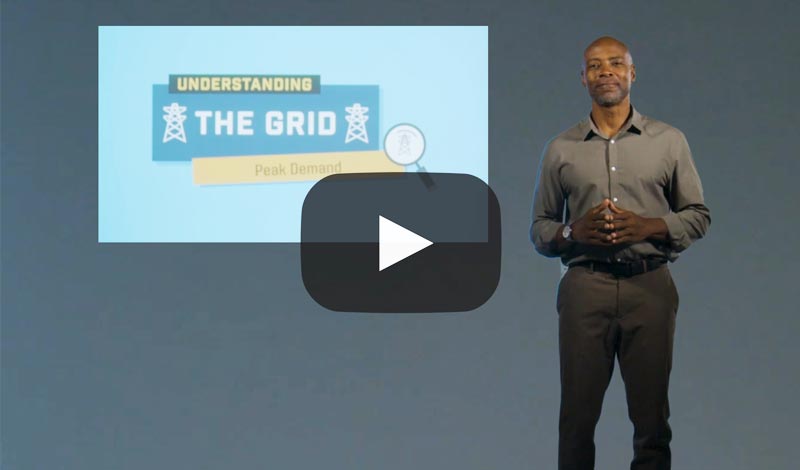Power generation, transmission and distribution are needed 24 hours a day. That’s because, with the exception of energy storage, electricity must be used as it’s generated. This is where the concept of peak demand comes into play.
Electricity demand during the course of a day looks very much like a hill. The hours may shift from place to place or season to season, but the overall effect is still the same.
In the hours when people tend to be asleep and most businesses are closed, overall electricity demand is low. During this time, there is a baseline level of power generated to provide enough for the entire grid.
As the day begins, demand ramps up and so does generation. This can happen by ramping up generation at a plant or by bringing additional facilities online to generate enough power to keep up with demand.
Peak demand hours are when most businesses are operating and when people are using the most energy. Because demand is at its highest, generation must also increase, with higher volumes of electricity being produced in more plants.
As many workdays end and people go home, demand in residential areas starts to grow as demand in industrial areas slows down. While some plants can reduce generation or go offline completely, most of them are still producing a great deal of power. As people go to bed and most business close, demand falls back to the baseline level. This cycle repeats the next day, the day after and so on.
Generating electricity to meet demand requires different levels of effort to provide power during different parts of the day. Bringing more power online or generating more power in the same plant during peak demand times comes with additional costs.
On top of that, this higher demand can be stressful on the transmission and distribution systems that make up the power grid. Not only does it test the limitations of how much electricity they can handle, but the power grid has been around for a long time, with many components more than 50 years old. This strain can lead to the shortening of equipment life and failure.
To compensate for the added cost and maintenance, peak demand charges or higher rates could apply during those times. By reducing your energy use during peak periods, you can support grid resiliency and potentially save money on your electric bill.
Understanding how peak power demand affects the grid can help you make informed decisions on how to use your energy.
